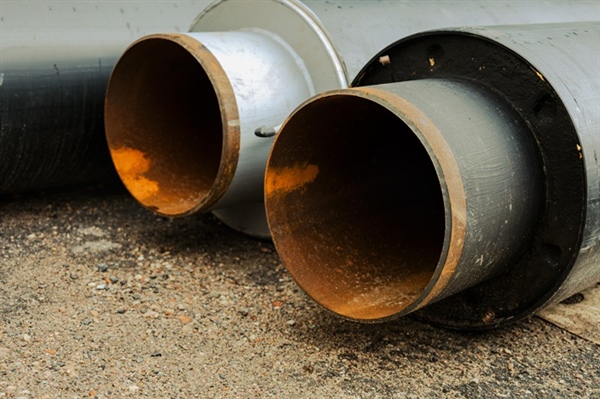How to Assess the Quality of a Trenchless Sewer Repair in Racine

For homeowners in Racine, a trenchless sewer repair offers a way to restore flow without the upheaval of an open trench. Assessing its quality starts with inspecting the cured-in-place liner for uniform thickness, seamless joints, and proper adhesion to the host pipe.
Video inspection provides a clear view of the interior, revealing any voids, wrinkles, or delamination. When evaluating a trenchless sewer method such as cured-in-place pipe lining, look for a smooth, continuous surface and confirm alignment at bends and transitions.
In this guide, we’ll explore five critical questions:
What criteria should be used to evaluate the success of a repair?
What diagnostic tools are essential for quality assurance?
How should homeowners test their plumbing post-repair?
What common post-repair issues should homeowners watch for?
And how do warranties and guarantees factor into these assessments?
Key Criteria for Evaluating Trenchless Sewer Repair Success
Structural stability forms the foundation of a successful trenchless sewer repair. Each section of rehabilitated pipe must meet or exceed original pipe strength requirements, as verified by post-installation hydrostatic pressure tests. Video inspection using high-definition CCTV cameras should confirm uniform liner thickness, absence of folds or gaps and precise lateral connection reinstatement.
Restored hydraulic capacity represents another critical benchmark. Flow rate measurements before and after rehabilitation should demonstrate at least 90 percent restoration relative to pre-failure capacity. Any deviation may indicate liner deformation or obstructions detected during camera runs. Dye testing can uncover subtle leakage points along joints or host pipe cracks.
Long-term durability depends on proper selection and installation of liner materials. If cured-in-place pipe lining is employed, resin saturation levels and curing temperature profiles must conform to manufacturer specifications.
Adherence to these parameters ensures chemical resistance, dimensional stability and expected service life beyond 50 years.
Essential Diagnostic Tools for Quality Assurance in Trenchless Sewer Repair
High-definition CCTV inspection remains the primary tool for post-installation evaluation. Modern pan-and-tilt camera systems provide full-pipe scans that document liner uniformity, joint integrity and lateral reinstatements. Recorded footage allows engineers to pinpoint structural anomalies such as delamination, wrinkling or intrusion of roots.
Laser profiling arrays complement visual inspection by generating three-dimensional pipe geometry models. These systems detect ovality, sagging and misalignment within fractions of an inch. Combined with sonar-based scanning, they can map surface roughness and identify voids between the host pipe and the liner.
Leak detection instruments including ultrasonic acoustic sensors and pressure decay gauges verify the watertight performance of the rehabilitation. Acoustic logs highlight active leaks by measuring sound frequencies generated by escaping fluid, while hydrostatic tests confirm system integrity under standardized pressure levels.
Post-Repair Plumbing Testing Methods for Homeowners
Homeowners should begin with simple flow assessments by running water through multiple fixtures. Filling sinks, flushing toilets and operating showers while observing drainage speed can reveal gradual blockages or slow-flow conditions. Any noticeable delay in emptying signals potential issues in the renewed sewer line.
Introducing food-grade dye into bathtub or sink drains provides a visual leak detection method. After introducing one to two cups of dye, monitor accessible cleanouts or outside manhole covers for colored water. Visible dye confirms bypass leaks, improper sealing of joints or cracks beneath the surface.
Regularly inspecting exposed cleanout ports and basement floor drains can alert homeowners to early warning signs such as moisture or odor. Tracking monthly water usage for unexplained increases further indicates hidden leaks. Prompt reporting of anomalies to a qualified trenchless specialist helps maintain repair quality over time.
Identifying Common Post-Repair Issues in Trenchless Sewer Work
Improper curing remains a frequent challenge. If resin saturation or temperature profiles fall outside recommended ranges during installation, sections of liner may remain soft or exhibit shrinkage over time. Incomplete cure undermines structural strength and increases susceptibility to root intrusion.
Wrinkles, folds or ledges in the liner material can form during inversion or steam-curing installation methods. These irregularities trap debris and grease, leading to premature blockage and odors. Routine camera inspections should verify a smooth, continuous liner surface.
Poor lateral connection reinstatement can create bypass channels that allow infiltration of groundwater or backflow. Misalignment or inadequate sealing around tee and saddle cuts may result in ongoing leaks at junctions. Ensuring precision cutting tools and inspection after reinstatement mitigates these risks.
Impact of Warranties and Guarantees on Quality Assessment
Material and workmanship warranties indicate manufacturer confidence and installation quality. Typical warranties span five to ten years, covering defects in resin, liner adhesion and structural performance under normal operating conditions. Extended warranties from resin suppliers often require documented compliance with installation and curing protocols.
Performance guarantees further reinforce quality assurance by specifying remediation measures in case of leaks or blockages within the coverage period. These guarantees usually stipulate annual CCTV inspections to validate ongoing system integrity. Failure to conduct scheduled inspections can void warranty coverage.
Homeowners should review warranty transfer provisions prior to property sale and retain original documentation. For detailed policy terms and to initiate warranty claims, contact Advanced Trenchless Solutions directly to verify coverage and service options.
To ensure a reliable trenchless sewer repair in Racine, Advanced Trenchless Solutions leverages rigorous evaluation criteria, state-of-the-art diagnostics, homeowner-friendly testing protocols and robust warranty packages. From structural integrity checks to annual performance inspections, our team maintains transparent standards at every step.
If you’re evaluating repair success criteria, require professional diagnostic tools, or need guidance on post-repair monitoring and warranties, reach out today. Trust Advanced Trenchless Solutions to deliver no-dig sewer rehabilitation that stands the test of time.
Call Advanced Trenchless Solutions at 844.513.4106 or visit 1138 6th Street South, Wisconsin Rapids, WI 54494. For comprehensive support, please contact us.